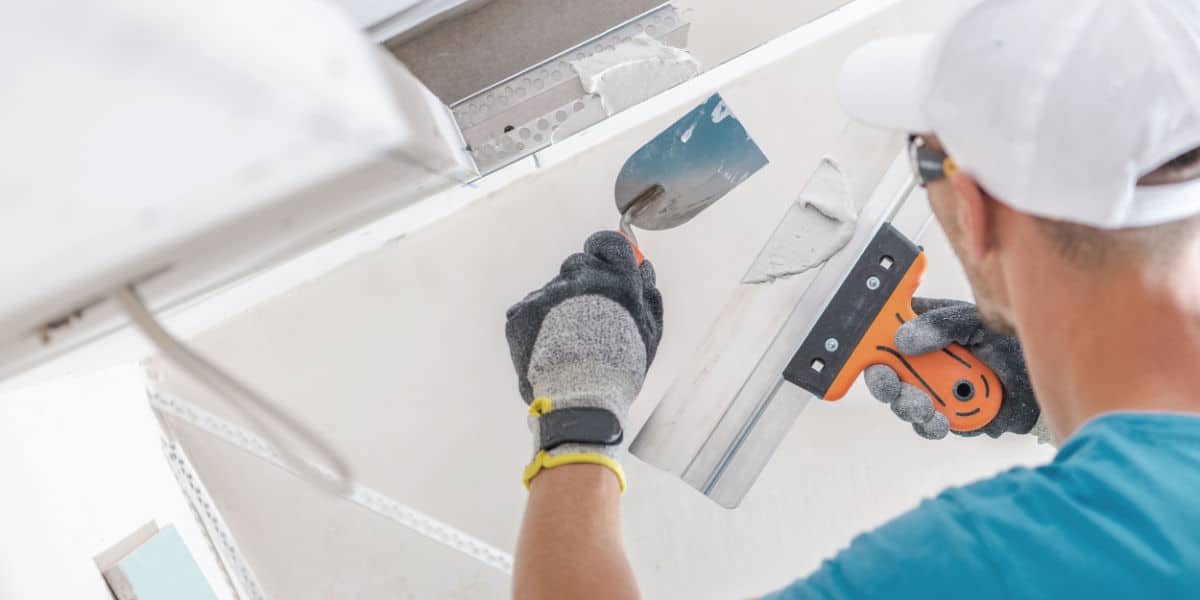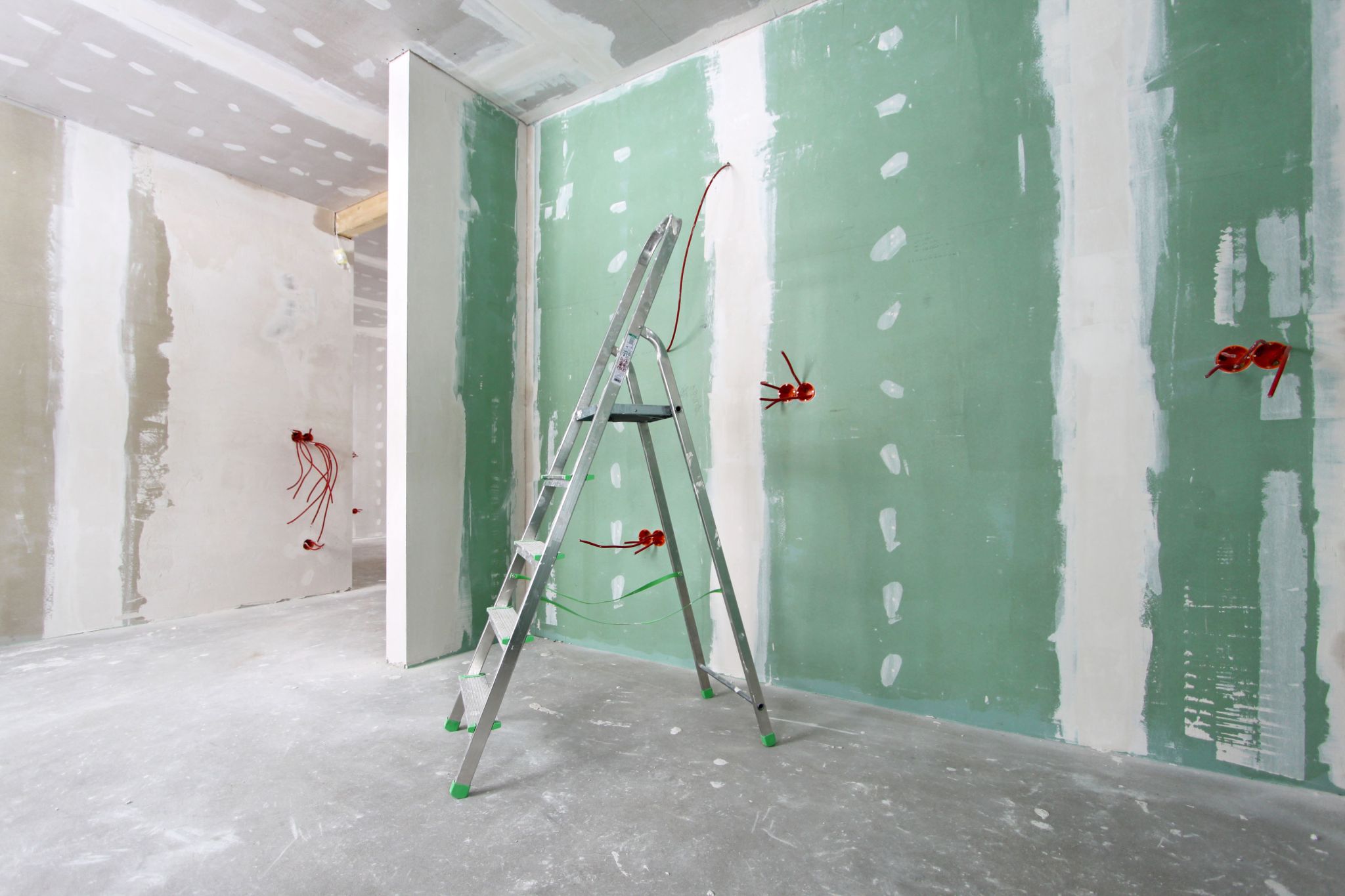Reliable Drywall Installation Solutions for Every Space
Reliable Drywall Installation Solutions for Every Space
Blog Article
Drywall Installation Facilitated: Tips for Perfect Outcomes
Drywall installation is commonly perceived as a daunting job, yet with the right technique and knowledge, it can end up being a manageable venture. Understanding methods for reducing, hanging, and finishing drywall can substantially impact the result.
Picking the Right Materials
Choosing the ideal materials for drywall setup is crucial to accomplishing a sturdy and aesthetically pleasing surface. drywall installation. The main part, drywall sheets, generally can be found in numerous thicknesses, with 1/2-inch sheets being conventional for indoor wall surfaces. For areas requiring extra dampness resistance, such as kitchen areas or shower rooms, take into consideration using green board or cement board, which are specifically created to hold up against moisture

Additionally, selecting the appropriate bolts-- either nails or screws-- is essential for safeguarding the drywall to the framework. Drywall screws are typically preferred for their holding power and lowered danger of popping. Think about the finishing touches such as primer and paint, which not just boost the appearance but also shield the drywall from wetness and wear.
Preparing the Setup Area
Prior to beginning the drywall installment process, it is necessary to prepare the installation location thoroughly. A clean work space reduces the threat of damage to existing products and permits for efficient motion throughout installation.
Following, evaluate the walls and ceiling for any type of blemishes, such as cracks, openings, or mold. Address these concerns beforehand; patch any kind of problems and allow adequate time for fixings to dry. Furthermore, make certain that electric outlets, switches, and plumbing are appropriately placed and accounted for, as this will affect drywall positioning.
Consider the environmental conditions. A stable temperature and humidity level are crucial for ideal attachment and efficiency of the drywall products. If essential, make use of a dehumidifier or heating unit to develop appropriate problems.
Cutting and Hanging Drywall
The trick to effective drywall installation depends on the accurate cutting and dangling of the panels. Begin by gauging the area accurately, considering any type of blockages such as electric outlets or home windows. Utilize a straight edge and an utility blade to score the drywall along your measurements, after that break it along the scored line for a clean break. For even more complex cuts, such as around outlets, a drywall saw can be utilized for accuracy.

Always function from the top down and delegated right, ensuring that you keep a staggered pattern to improve stability. Appropriately hanging the drywall establishes the foundation for a smooth surface, ultimately resulting in premium results in your drywall job.
Insulation and Mudding Techniques
While appropriate cutting and dangling of drywall sets the stage, the following crucial step includes grasping taping and mudding strategies to ensure a seamless surface. Insulation is essential for strengthening joints and protecting against cracks; it includes installing tape right into the used joint substance (mud) Start with a quality fiberglass or paper tape, applying the tape over the joint and pressing it right into the damp mud making use of a taping blade, ensuring no air bubbles remain.
When the tape remains in location, use a slim layer of joint substance over the tape, feathering the sides to develop a smooth transition to the drywall surface. Allow this layer to dry completely before sanding it lightly to remove imperfections. Repeat this process, applying additional coats of mud as required-- usually two to three coats-- while slowly broadening the application area with each layer to accomplish a seamless look.
After the final layer dries out, sand the surface area with a fine-grit sandpaper till smooth. drywall contractor. Remember to wear a mask throughout fining sand to prevent inhaling dust particles. Mastering these taping and mudding strategies is critical for attaining a professional-quality coating in your drywall setup
Completing Touches for Perfection
Achieving a remarkable drywall installment surpasses taping and mudding; it culminates in the finishing touches that boost the general appearance. These last actions are important in guaranteeing a professional-grade finish that boosts the appearances of your area.
Begin by sanding the dried joint substance to produce a smooth surface area. Utilize a fine-grit sandpaper Check Out Your URL and a sanding block or post sander for ideal control. Pay particular focus to corners and edges, as these locations tend to call for more meticulous job. After sanding, clean down the walls with a wet fabric to remove any type of dust bits, guaranteeing a tidy surface for paint.
Next, apply a guide specifically developed for drywall. This action is important, as it aids seal the joint compound and provides a consistent base for the overcoat. When the guide dries, check for any kind of imperfections, and retouch as required.
Conclusion
In conclusion, successful drywall installation hinges on the cautious choice of materials, extensive prep work of the setup location, and exact implementation of reducing and hanging methods. Mastery of taping and mudding processes is vital for accomplishing a smooth surface.
Drywall setup is typically viewed as a complicated job, yet with the ideal technique and understanding, it can end up being a manageable endeavor.Selecting the ideal products for drywall setup is vital to attaining a long lasting and visually pleasing surface.Before starting the drywall setup process, it is important to prepare the installation location completely. image source Mastering these taping original site and mudding techniques is essential for attaining a professional-quality surface in your drywall installation.
In verdict, effective drywall installation pivots on the cautious selection of products, complete preparation of the installment area, and precise implementation of cutting and hanging strategies.
Report this page